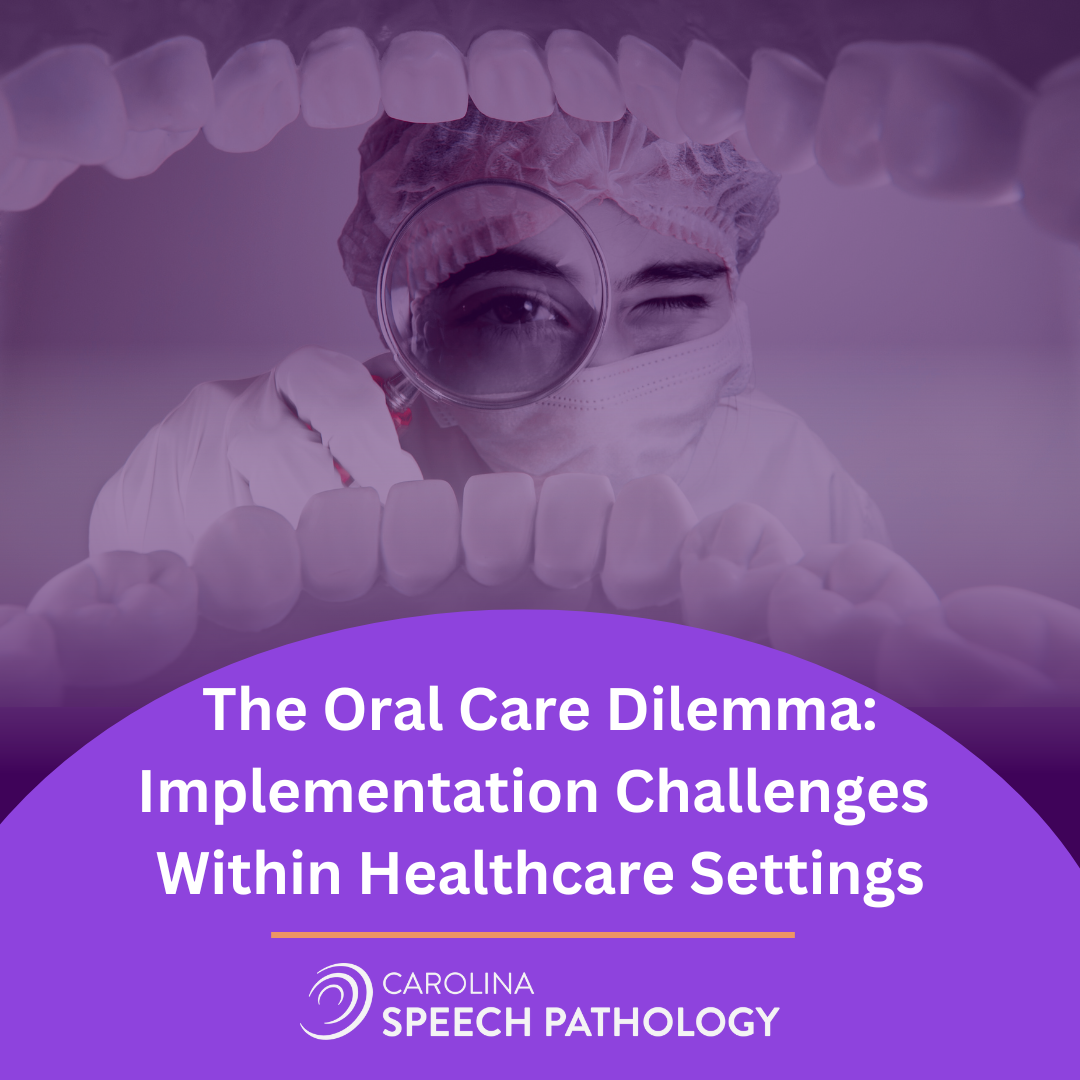Have you ever heard the phrase “oral health is overall health?” Understanding the importance of oral hygiene is an absolute must for healthcare workers and caregivers due to its impact on overall health, medical costs, and quality of life. (Click here to read more about oral care and whole-body wellness.)
Maintaining oral hygiene may seem relatively simple for those who are independent with activities of daily living and have quick and easy access to supplies. But when you consider individuals who are dependent or care-resistant, completing routine and effective oral care is not so simple. Assisting patients who are orally averse, combative, agitated, minimally responsive, or sedated all pose different types of challenges for staff members. Lack of staff education as well as staff uncertainty regarding which supplies are most efficacious when assisting patients with mouth care are additional roadblocks.
Weening-Verbree et al (2021) examined barriers and facilitators of oral health care experienced by nursing home staff and found that while staff members acknowledged the importance of oral care, there were complications with facilitating this within daily practice. Staff members reported “a lack of products” as a barrier, even though toothbrushes were readily available. Among the most frequently mentioned issues were facilitating oral care when working with patients with cognitive impairments and behavioral concerns, time pressures, and a lack of overall education and training.
While some staff members reported a lack of products as a barrier, there are also inconsistencies across the healthcare community regarding which oral care products, including cleansers and solutions, are the most efficacious. Chlorhexidine has been cited as a helpful oral care product for the prevention of pneumonia across several studies; however, Deschepper et al (2018) published that “in a general hospital population, chlorhexidine oral care is significantly associated with increased mortality. These findings incite reconsideration of the practice of chlorhexidine oral care in patient populations for which an evidence-based benefit is lacking.” Chlorhexidine has also been associated with changes in taste, increase in tartar build up, and mouth irritation.
A quick Internet search for those seeking information on the “best” oral care products reveals a wide variety of options; single use mouth sponges are one of the first products to pop up! We SLPs know that while those swabs can be great in certain circumstances, they are not a substitute for a toothbrush. While the overarching concept of “oral care” may seem simple, actual implementation within a healthcare setting is complicated by conflicting information within the literature, lack of training, and confusion regarding which products are safe and effective.
If you are interested in learning more about the current oral health recommendations and practices for care-resistant and dependent patients as well as facilitators to improve the implementation of oral health practices within your setting, join Dr. Brittney Ciszek for a Live Webinar on December 6th from 3:00-4:30 eastern. There is no greater expert on this topic than a dentist! Read more and register here.
Written by Lyndsay Parker, M.S., CCC-SLP
Edited by Selena Reece, M.S., CCC-SLP, BCS-S
Deschepper, M., Waegeman, W., Eeckloo, K. et al. Effects of chlorhexidine gluconate oral care on hospital mortality: a hospital-wide, observational cohort study. Intensive Care Med 44, 1017–1026 (2018). https://doi.org/10.1007/s00134-018-5171-3.
Weening-Verbree, Lina Francina, Dr. Annemarie Adriana Schuller, Sie-Long Cheung, Prof. Dr. Sytse Ulbe Zuidema, Prof. Dr. Cornelis P. Van Der Schans, Dr. Johannes Simon Maria Hobbelen. Barriers and facilitators of oral health care experienced by nursing home staff. Geriatric Nursing, Volume 42, Issue 4, 2021, Pages 799-805. ISSN 0197-4572. https://doi.org/10.1016/j.gerinurse.2021.04.012.

